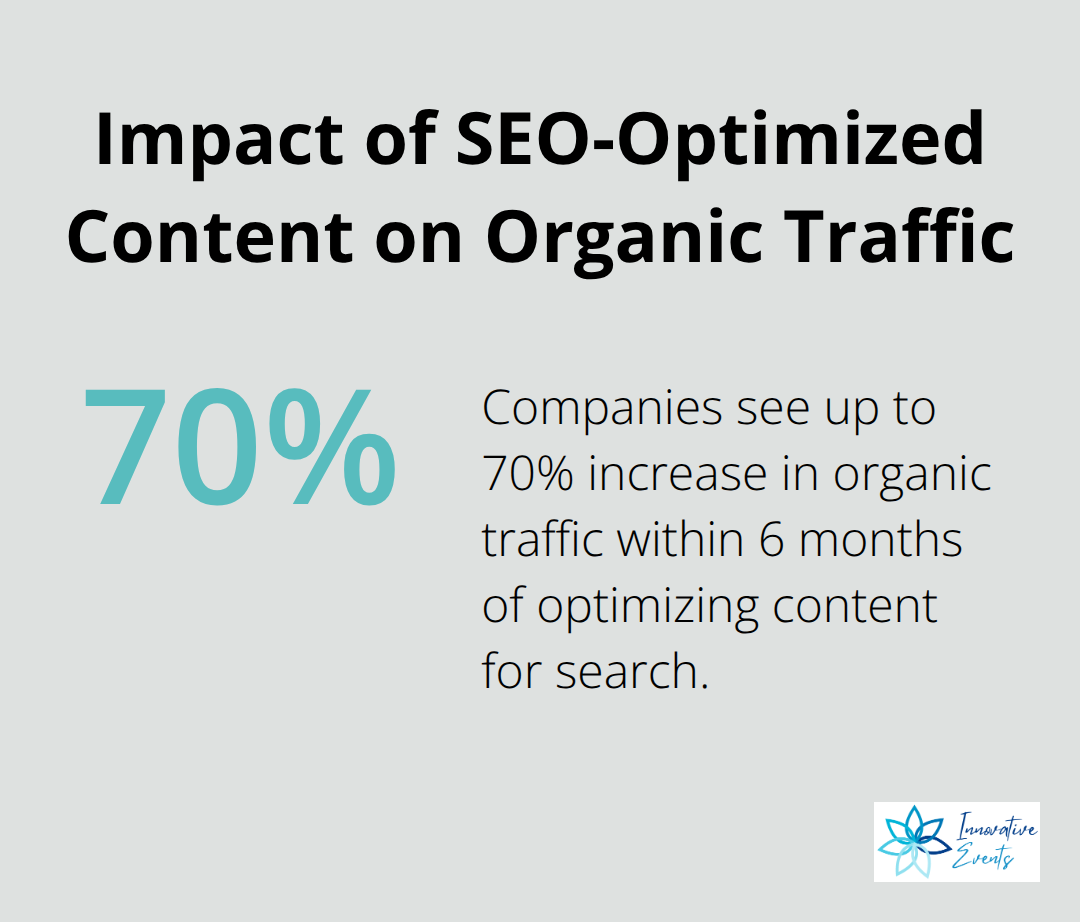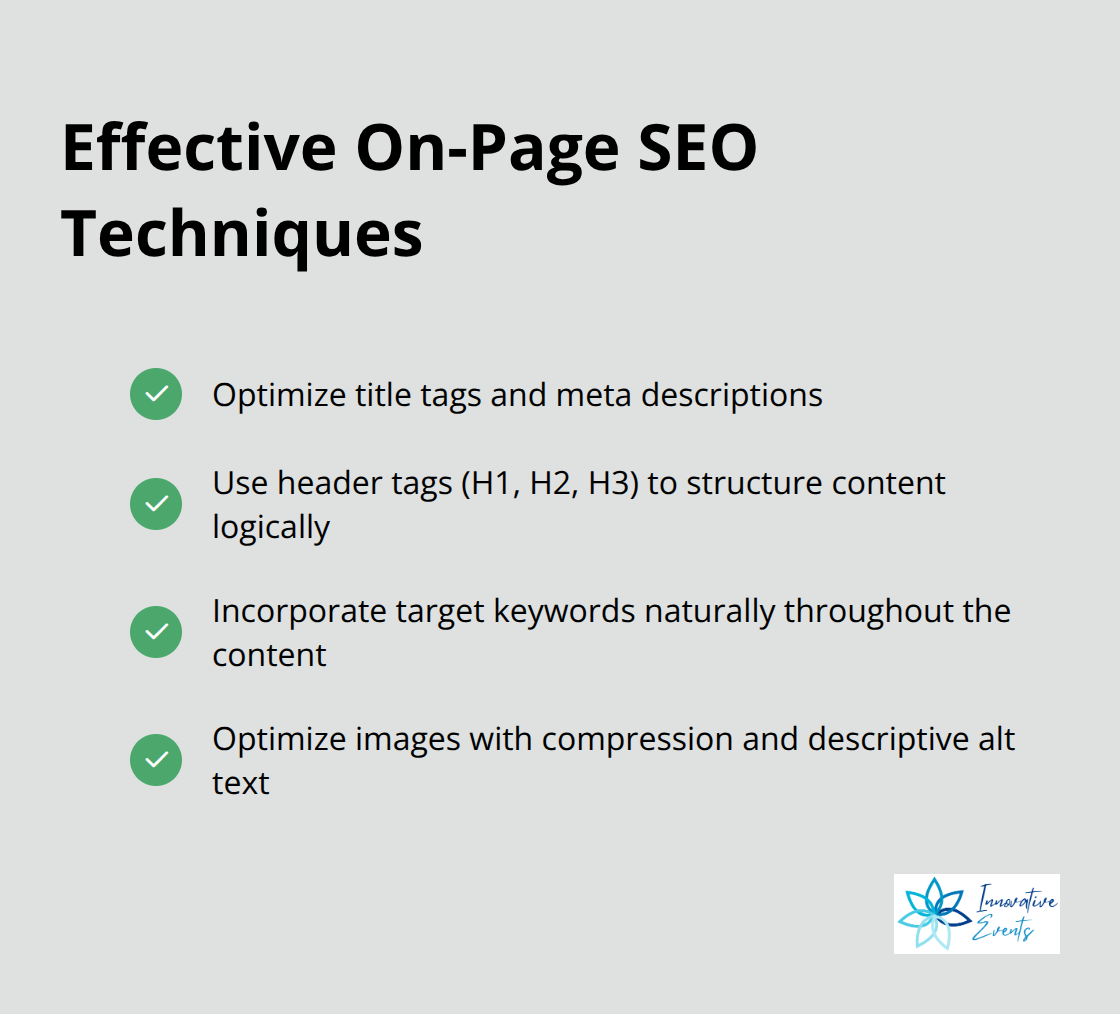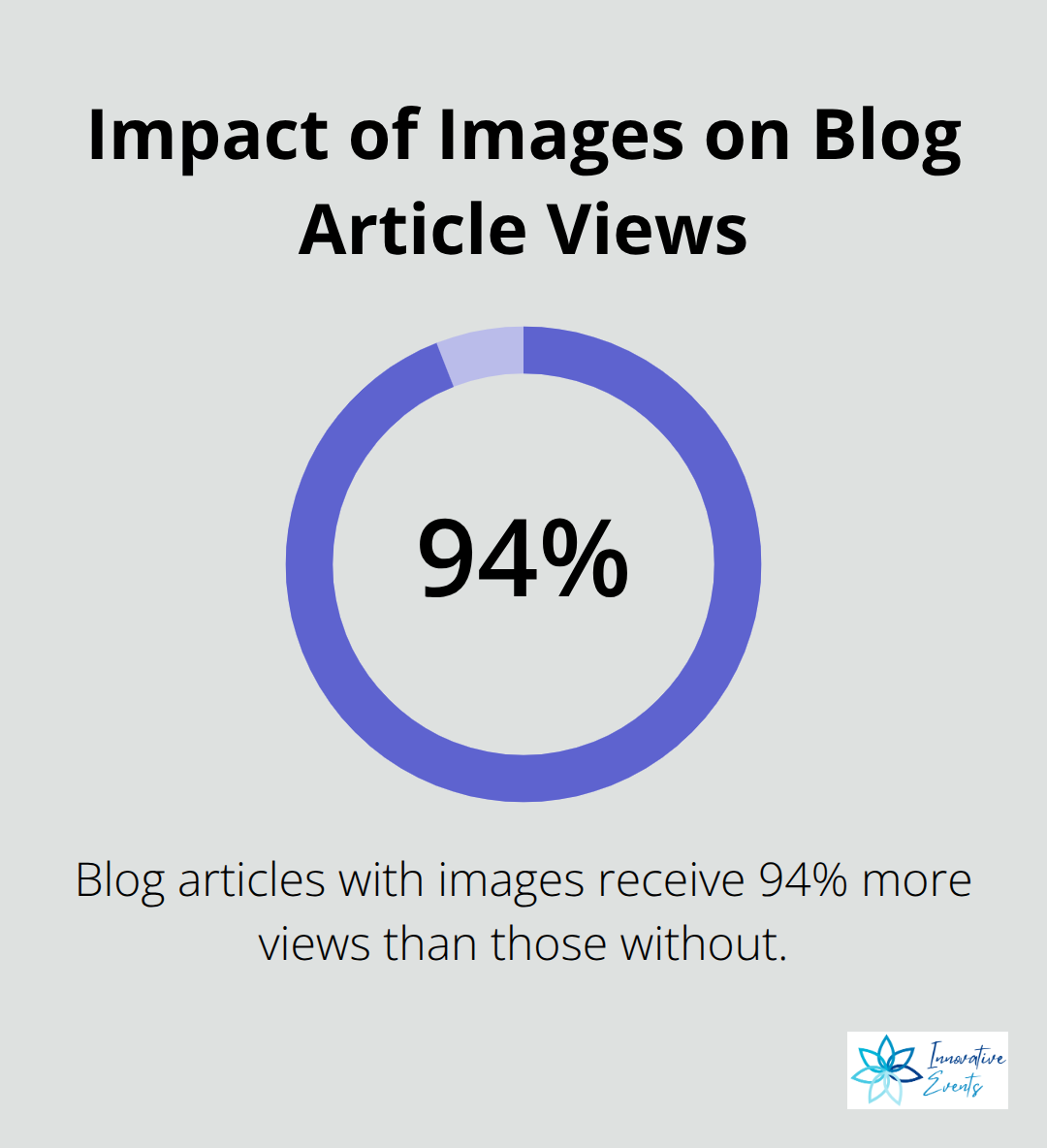At Innovative Events, we’ve seen firsthand how SEO and content marketing work together to drive online success.
These two strategies form a powerful alliance, boosting visibility and engaging audiences effectively.
In this post, we’ll explore the synergy between SEO and content marketing, sharing practical tactics to enhance your digital presence.
We’ll also provide actionable tips for creating SEO-friendly content that converts, helping you stay ahead in the competitive digital landscape.
How SEO and Content Marketing Work Together
The Perfect Partnership
SEO and content marketing form a powerful duo at the core of effective digital strategies. SEO (Search Engine Optimization) improves a website’s visibility in search results, while content marketing creates valuable, relevant content to attract and engage target audiences. These strategies complement each other perfectly: SEO helps content get found, and great content gives search engines a reason to rank sites higher.
Boosting Organic Visibility
The impact on organic search visibility proves significant. A study by Backlinko reveals that the average Google first page result contains 1,447 words, indicating search engines favor comprehensive, well-researched content. Companies that optimize their content for search often see substantial increases in organic traffic (sometimes up to 70% in just six months).

Enhancing User Engagement
The combination of SEO and content marketing doesn’t just appeal to search engines; it also skyrockets user engagement. HubSpot reports that there are 16 essential website metrics for growth this year and beyond. These metrics help track and improve engagement on your site. SEO-optimized blog posts often lead to a 25% increase in time spent on websites.
Practical Implementation
To implement this synergy effectively, start with thorough keyword research. Tools like SEMrush or Ahrefs help identify what your audience searches for. Create content that addresses these topics comprehensively. Optimize your content structure with clear headings, meta descriptions, and internal links.
Continuous Improvement
Updating existing content with new information and keywords can be just as effective as creating new content. This approach helps maintain high rankings for competitive keywords in various industries (including event planning). Try to review and refresh your content regularly to keep it relevant and valuable to your audience.
The power of combining SEO and content marketing lies in its ability to attract, engage, and convert audiences. As we move forward, let’s explore the key SEO tactics that can supercharge your content marketing success.
How to Supercharge Your Content with SEO
At Innovative Events, we know that mastering SEO tactics is essential for content marketing success. Let’s explore some practical strategies that can significantly boost your content’s performance.
Keyword Research: The Foundation of SEO
Keyword research gives SEO specialists the tools to become the most informed marketers about buyers, their behaviour, problems, search habits, and receptiveness. Tools like SEMrush and Ahrefs help identify high-volume, low-competition keywords relevant to your industry. For example, “experiential marketing ideas” has a monthly search volume of 1,200 with relatively low competition. This insight can help create targeted content that ranks well and drives traffic.
To optimize your content, focus on long-tail keywords. These longer, more specific phrases often have less competition and higher conversion rates. “Corporate event planning tips for small businesses” is more targeted than just “event planning.”
On-Page SEO Techniques That Drive Results
On-page SEO makes your content easily digestible for both search engines and users. Here are some effective techniques:

- Optimize your title tags and meta descriptions. Keep titles under 60 characters and descriptions under 160 characters for optimal display in search results.
- Use header tags (H1, H2, H3) to structure your content logically. This helps search engines understand your content hierarchy and improves readability for users.
- Incorporate your target keyword naturally throughout the content, especially in the first 100 words. Try to maintain a keyword density of 1-2%.
- Optimize images by compressing them for faster load times and using descriptive alt text. This improves accessibility and helps search engines understand your visual content.
Link Building and Content Promotion Strategies
Link building remains a critical factor in SEO success. Here are strategies that yield results:
- Create high-quality, shareable content. Infographics, original research, and comprehensive guides are more likely to attract backlinks naturally.
- Reach out to industry influencers and offer to contribute guest posts. This can help you gain valuable backlinks and expand your audience.
- Leverage social media to promote your content. While social signals aren’t direct ranking factors, increased visibility can lead to more backlinks and traffic.
- Implement internal linking strategies. Link to relevant content within your site to distribute link equity and help search engines understand your site structure.
SEO is an ongoing process. Analyze your content performance regularly using tools like Google Analytics and Google Search Console. This data will help you refine your strategies and improve your SEO efforts continually.
Now that we’ve covered the key SEO tactics for content marketing success, let’s explore how to create SEO-friendly content that truly resonates with your readers and drives conversions.
How to Create Content That Ranks and Converts
Focus on User Intent
Understanding your audience’s needs forms the foundation of effective content creation. Expanding your understanding of search intent can refine your engagement and marketing strategies, improving audience segmentation, relevancy, and engagement. Tools like Google’s “People Also Ask” feature help identify common questions related to your topic. For example, if you write about “corporate event planning,” you might find questions such as “What are the key elements of a successful corporate event?” Address these questions directly in your content to meet user intent and improve your ranking potential.
Structure Your Content for Readability
Break your content into easily digestible sections with clear, descriptive headings. Use short paragraphs and sentences to enhance readability. Users typically read only 20-28% of words on a web page (according to a Nielsen Norman Group study). Make those words count by placing important information at the beginning and using bullet points to highlight key takeaways.
Optimize for Featured Snippets
Featured snippets appear at the top of search results and can significantly increase your visibility. To optimize for these, provide clear, concise answers to common questions in your content. For instance, if you discuss “event budgeting tips,” include a brief paragraph that succinctly outlines the main steps, increasing your chances of being featured.
Incorporate Multimedia Elements
Visual content can significantly enhance user engagement and time on page. Blog articles with images receive 94% more views than those without.

Include relevant images, infographics, or videos in your content. For example, if you write about “event layout design,” include diagrams or 3D renderings to illustrate your points.
Optimize for Mobile
Mobile devices drive about 59.7% of global website traffic as of April 2025, making mobile-friendly content non-negotiable. Use responsive design, optimize images for faster loading, and ensure your content is easy to read on smaller screens. Google’s Mobile-Friendly Test can help you identify areas for improvement.
Include Clear Calls-to-Action (CTAs)
Every piece of content should guide the reader towards a desired action. Whether it’s signing up for a newsletter, downloading a resource, or contacting your team, make sure your CTAs are clear, compelling, and relevant to the content. A/B test different CTA placements and wording to optimize conversion rates.
Final Thoughts
SEO and content marketing form a powerful combination for digital success. This integrated approach improves online visibility, engages target audiences effectively, and drives conversions. Companies that implement these strategies often see increased organic traffic, higher search rankings, and improved user engagement.
To create an effective SEO and content marketing strategy, businesses should align content creation with thorough keyword research. They must produce high-quality content that addresses audience needs and search intent. Optimizing content structure, incorporating multimedia elements, and ensuring mobile-friendliness are also essential steps.
At Innovative Events, we apply a holistic approach to digital marketing, similar to our personalized lifestyle programs. We combine SEO techniques with compelling content to help businesses achieve lasting online success. Our team can develop a customized plan to address your specific digital challenges and boost your online presence.

